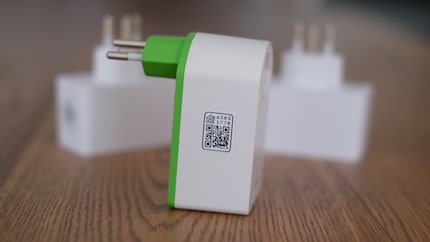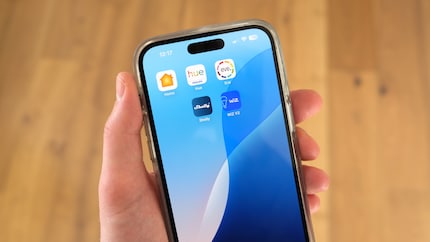
Guide
These plugs may be smart, but are they clever?
by Martin Jungfer

Smart plugs have a lot of uses and are very popular. However, they’re far from self-explanatory. Read on to find out the answers to the most frequently asked questions.
Our Community often has questions about smart plugs. Some of them come from product pages, others come up in discussion threads. So I’ve put together an overview that may get you to the right answer sooner. If you have another question, please ask it in the comment section below. I’ll update the article and add to it regularly.
In the article below, you’ll find a beginner’s guide to the smart plug world:
Matter is a common standard now shared by over 200 companies. Devices that are Matter-compatible can communicate with each other via Wi-Fi and the Thread wireless standard. They’re independent of the manufacturers’ own smart home environments. You can find smart plugs with Matter here.

Most smart Wi-Fi adapters operate at 2.4 GHz. Currently, (as of January 2025), we don’t have a model in the shop that supports 5 GHz. This usually isn’t a problem because almost all routers are dual-band capable and it’s therefore always possible to integrate your smart plugs into your home Wi-Fi network – albeit sometimes with an adjustment to the router configuration.
5 GHz Wi-Fi does have some advantages – it’s faster and can transmit more data. Nevertheless, 2.4 GHz is still the standard for smart plugs and smart home-enabled devices. This allows manufacturers to install cheaper chips. In addition, the 2.4 GHz frequency is better at penetrating obstacles and therefore has a greater range. Some surveillance cameras rely on 5 GHz because there are large volumes of data flowing.
Adapter plugs that are not integrated into the Wi-Fi can generally only communicate if there’s a central interface, a so-called bridge. The exception are smart plugs that use Thread, the wireless standard from Matter. Other devices can also serve as a control centre for that, for example an Apple TV box, an Alexa from Amazon or a Google Nest Hub. (Here’s a useful overview of the devices.)
There are also smart plugs that are themselves a Full Thread Device (FTD). This means that a smart plug can act as a router within the Thread network if it’s permanently connected to the power supply. This model from Eve is an example of this:
If you want to use the smart plugs from Philips Hue, you’ll need a bridge because Philips uses the Zigbee standard. And this always requires an additional device. This can come directly from Philips from the Hue line, or alternatively, Amazon’s 4th generation or newer Echo devices are suitable.
Philips uses the Zigbee standard. This is supposed to connect to Matter. However, I’ve not been able to do this at home with my Hue light bulb and Apple TV – despite the supposed compatibility. But the situation should improve in the future.
They’re always using a bit. Specifically, the most economical models consume 0.3 watts in standby mode. There are also some that use up to one watt. This means that the smart plug is always ready to use when you, as its mistress or master, want something from it. If the smart plugs are being used, consumption can quickly go up. If, for example, an Eve Energy is used as an electricity meter, the consumption of the plug alone is 0.6 watts.
Cloud or no cloud, that’s the question we’re facing here. And, of course, where the cloud computers are located and how the provider has regulated the handling of your data in its terms of use.
My personal favourite here are the devices from Eve, because they collect no or at least very little data. No data is stored in the cloud – you don’t even have to create a profile or user account to use it. If you use Eve products in an Apple environment, the data always remains local on your devices.
Other providers that use cloud solutions are now laying emphasis on data protection and data security more than before. That’s why Hombli is committed to encryption and anonymisation of your data. Others stress that you have your cloud computers in Europe.
The situation is different at MyStrom, where the terms and conditions state that user data is also stored in the USA – and there’s less strict data protection there.
Basically, you need to be aware that every new smart plug poses a security risk and that your data could be exploited to varying degrees, depending on the manufacturer, or you could even fall victim to a hacker attack. So,before you purchase a smart plug, it’s worth looking at the data protection notice. Renowned brands from Europe generally place more value on security and economical use of data than low-cost providers from other regions of the world.
Yes, provided they both work with Matter. Or you can make sure that they’re compatible with your smart home system. The devices from different manufacturers then appear in the Apple Home interface, Google Home or in the Alexa app.
However, it’s better or at least easier if you decide on one manufacturer. This saves you having to install and operate several apps, and possibly even navigating several customer logins.

No. Subscriptions are mostly useful for manufacturers. If you’re a user and subscribe to them, they receive money from you on a regular basis. Manufacturers of smart adapter plugs don’t yet rely on subscriptions – at least not yet. The exception is MyStrom. The Swiss company now belongs to the French group Engie. In 2024, MyStrom launched a subscription model. Since then, historical information that was previously accessible free of charge, for example on electricity consumption, has cost money to access (article in German). Customers are annoyed about this and it reflects in the product reviews on our shop.
When buying smart plugs, I recommend you opt for providers that don’t operate on a subscription model. Even if, of course, you can’t be sure that a company won’t want to jump on the subscription bandwagon at some point.
If you want to control or monitor devices that consume a lot of power via a smart plug, the maximum output power will be the most important information you need. An oven or a powerful air conditioner, for example, can easily consume 3,000 watts. This is where many smart plugs reach their limits. The adapter plugs from Hombli, for example, can monitor up to 2,500 watts of power at 10 amps. That’s the absolute max. Other manufacturers, as you can see from this table overview created by (Kassensturz, monitor up to 2,300 watts (link in German). 2,300 watts are sufficient for kettles, washing machines or fully automatic coffee machines. And that’s usually enough for fan heaters too. The oven is one of the largest consumers in the house so you’d then have to find a solution with Shelly switches in the fuse box – or have them installed by a qualified electrician.
You can command all smart adapter plugs that are compatible with Amazon Alexa, Siri or Google Assistant. The plugs themselves don’t have a microphone. But they use the microphone that’s built into the corresponding control devices of the smart home system. These then pass on the command. In addition to the smart plug, you also need an Apple TV box, a Nest Hub (Google) or an Alexa device from Amazon.
Alternatively, you can also use an iPad or a HomePod as well as a HomePod Mini as your control centre with Apple. In the Google world, any Android smartphone could also take over the function of the control centre.
Yes, there are. With the Smart Power Strip from Hombli, you can individually measure the power consumption of each device in one of the three sockets. You then have the option to give each of them a name so that you can address them via Siri or Alexa. However, it’s fitted with a German Schuko plug, so it doesn’t really make sense in Switzerland. Our buying teams are keeping their eyes open so that we can soon get one or two nice new additions to our range.
This power strip, on the other hand, isn’t so smart – even though it’s called that. So don’t be fooled by the product name.
Journalist since 1997. Stopovers in Franconia (or the Franken region), Lake Constance, Obwalden, Nidwalden and Zurich. Father since 2014. Expert in editorial organisation and motivation. Focus on sustainability, home office tools, beautiful things for the home, creative toys and sports equipment.
Practical solutions for everyday problems with technology, household hacks and much more.
Show all